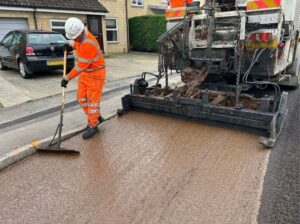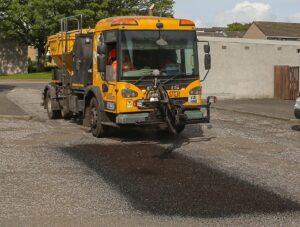Kier Highways Solutions will be taking delivery of four new road emulsion sprayers, a first in the UK market.
The machines will be available to Kier just as the new surface dressing season starts on its contracts.
The fleet have low-entry cabs with direct vision technology allowing greater visibility, reducing blind spots and improving safety for operators and road users.
These innovative cabs have a two-step entry design which allow operatives to move both forwards and upwards. This removes the need for a ladder (which is commonplace on standard cabs) and in turn greatly reduces the risk of falling.
Other enhanced safety features include electronics to monitor tyre pressures and wheel nut tightness, and hand lances in place of watering cans for spraying in tight places, mitigating risks of burns and muscular strain.
To increase efficiency, the absence of rear gantries removes the need for an additional operative to be at the back of the vehicle. This also reduces the operator’s exposure to high decibels from the engine as well as exposure to fumes.
Spray bars will be controlled automatically from a series of radar sensors. For areas of poor visibility, the spray bar can be controlled by an operator from outside the cab via a handheld device – reducing exposure to risks even further.
Two of the four sprayers will be starting works in May, with the remaining two sprayers expected to start works in July.
Lee Draper, general manager at Kier Highways Solutions, said: “We couldn’t have done this without our people, who contributed opinions and ideas ultimately led to these innovations coming to life.
“Through discussing the requirements with our sprayer operators, we were able to specify a product that meets the operators’ needs and improves safety. The operators’ requirements formed the final tender specification.”
“We’ve listened and this investment shows how we will put safety, as well as that of our supply chain and customers, first. It also demonstrates our commitment to continuous improvement for our fleet and raising safety standards within the surface treatments industry.”






















